ISSN ONLINE(2319-8753)PRINT(2347-6710)
ISSN ONLINE(2319-8753)PRINT(2347-6710)
Mahabir Singh,1 Ravinder Kumar Sahrawat,2 Minakshi3 and Meenal Malik4
|
| Related article at Pubmed, Scholar Google |
Visit for more related articles at International Journal of Innovative Research in Science, Engineering and Technology
Closed form analytical expressions for the stresses and displacements are derived caused by a long vertical tensile fault buried in a homogeneous, isotropic, perfectly elastic half-space with rigid boundary. The Airy stress function approach has been used to calculate stresses and displacements at an arbitrary point of the half-space. The variation of the displacement field with the horizontal distance from the fault and with the depth is studied numerically and the results obtained in the case of rigid boundary are compared with that of free boundary.
Keywords |
| Deformation, Long Tensile Fault, Airy Stress Function, Rigid Boundary. |
INTRODUCTION |
| Steketee (1958) and Okada (1985) have applied the theory of dislocation to seismological problems. To understand the deformation or dislocation, the two dimensional models are very useful. Such models are developed by Maruyama (1964), Rybicki (1971), Freund and Barnett (1976) and Davis (1983). In contrast to the progress that has been made in the modeling of the deformation field due to free boundary the studies related to rigid boundary are scarce. |
| In the present paper, the results of Singh and Garg (1986), Rani et al. (1991) and Singh and Singh (2000) are of direct relevance. These researchers applied the traction-free boundary conditions at the surface of half-space. Malik et al. (2012), Malik et al. (2013) and Malik and Singh (2013) obtained the results by considering the source buried in a half- space with rigid boundary. Following the work of above researchers, the airy stress function for a long tensile fault of finite width has been obtained in the present paper and the expressions for stresses and displacements at any point of the half-space with rigid boundary caused by a long vertical tensile fault are derived using the relations between stresses and displacements given by Sokolnikoff (1956). |
| The tensile dislocations are often employed to many seismic events like magma intrusion, dykes injection, mine collapse and study of fluid driven cracks. |
THEORY |
 |
 |
 |
 |
 |
IV. DISCUSSION |
 |
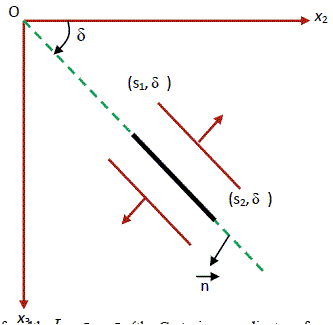 |
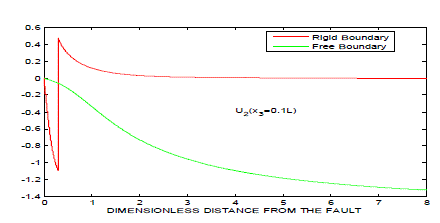 |
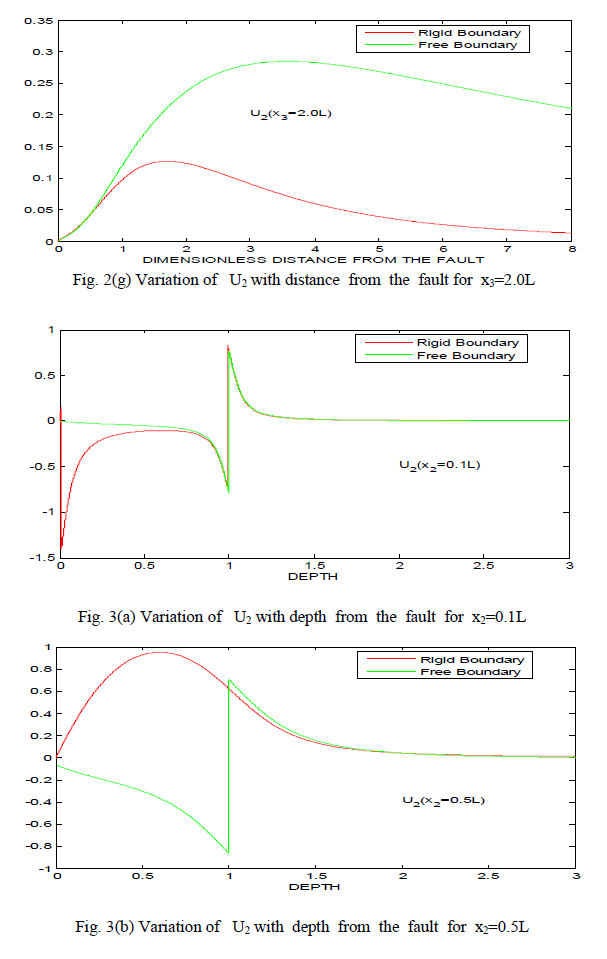 |
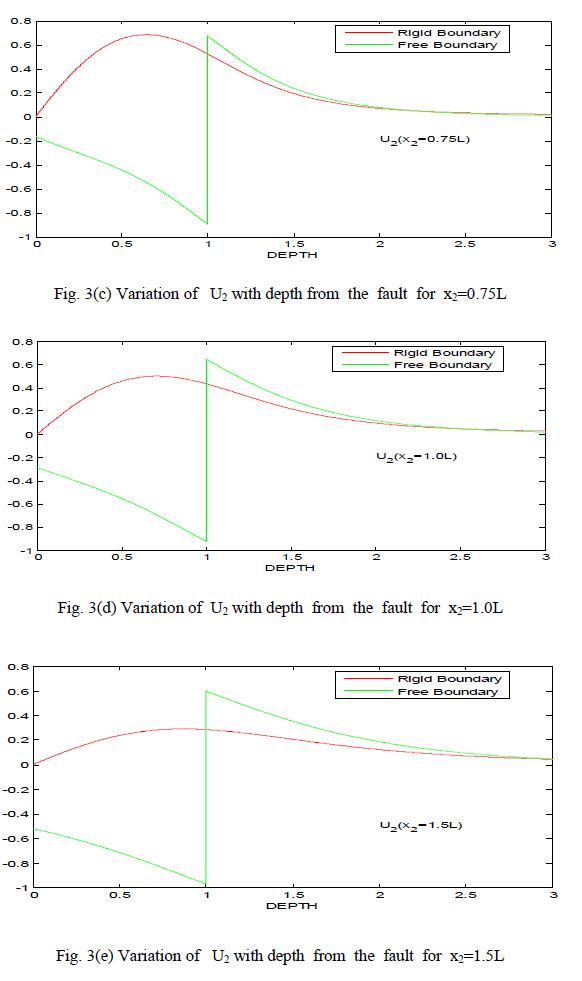 |
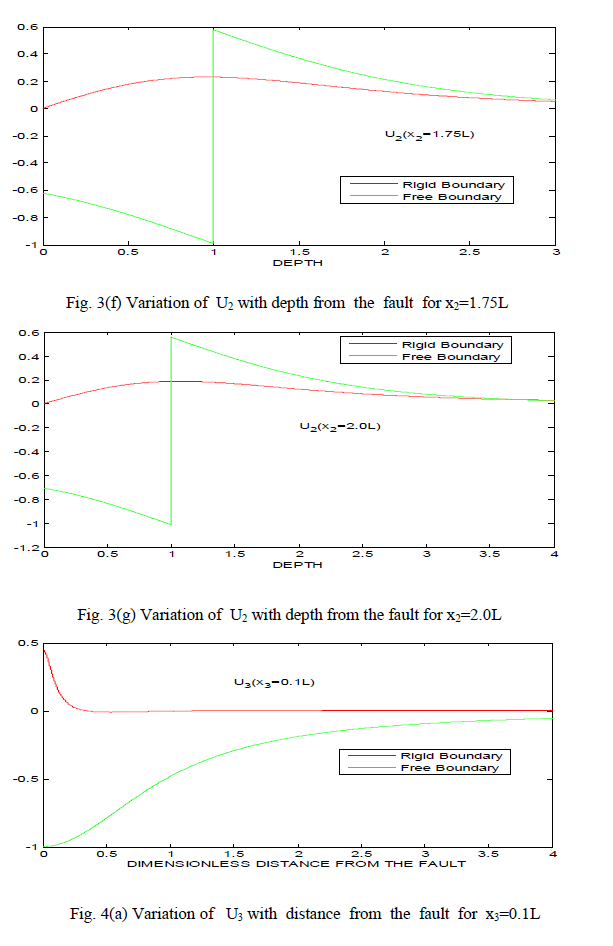 |
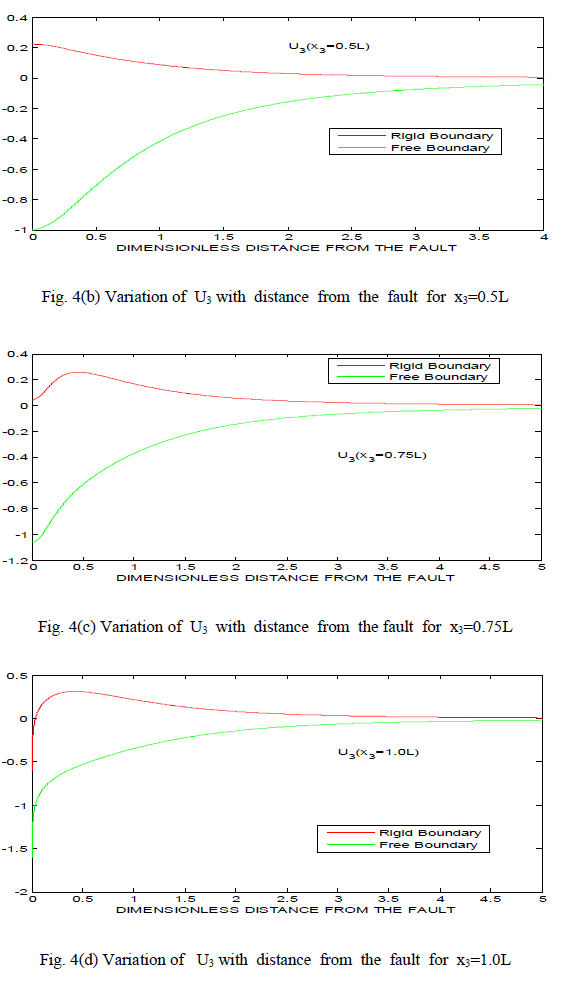 |
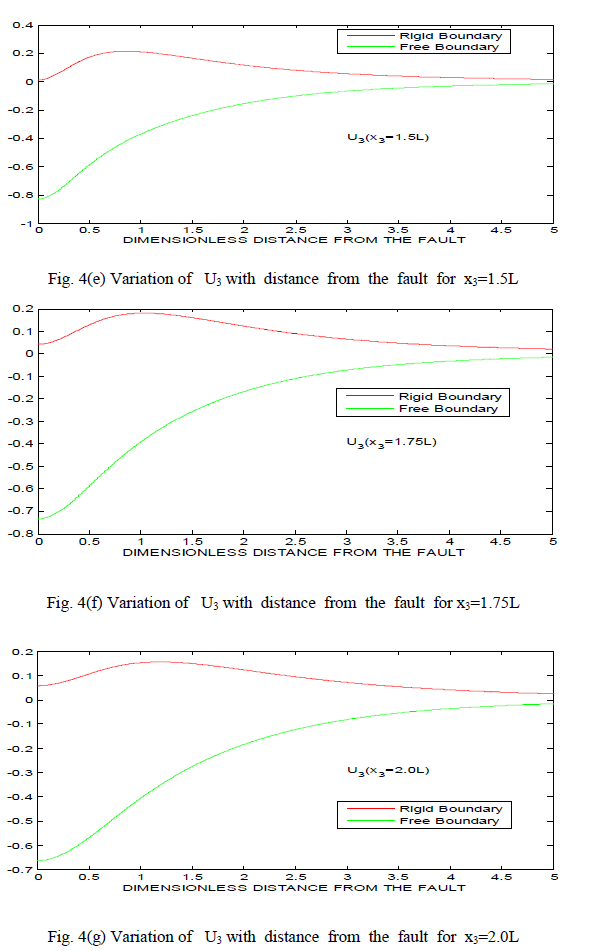 |
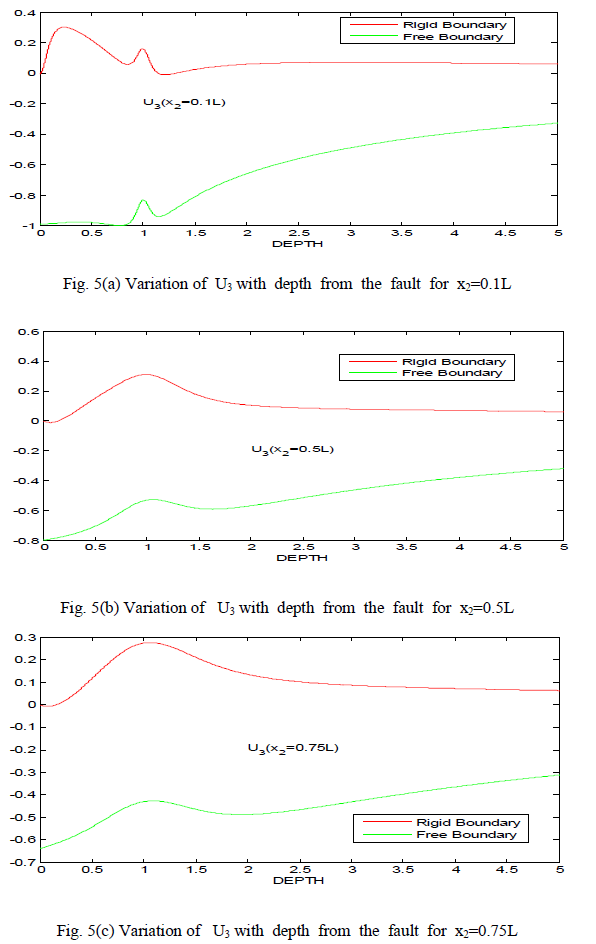 |
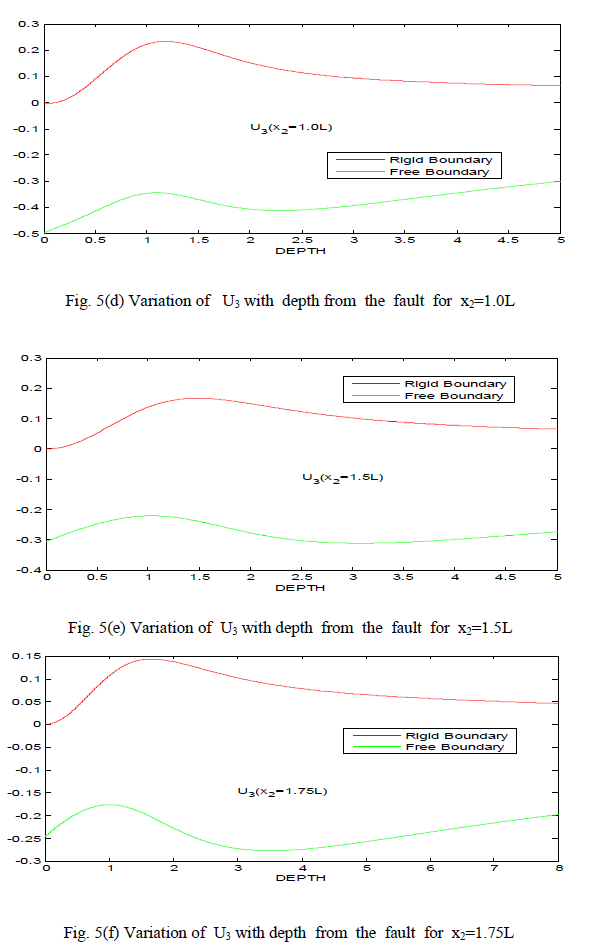 |
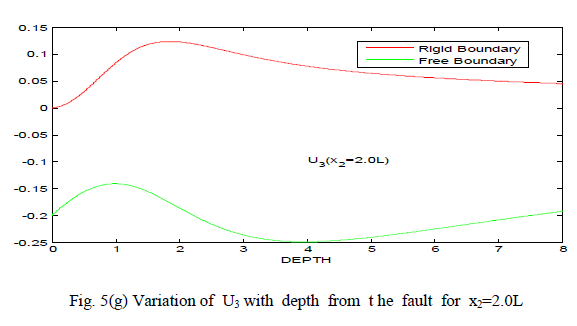 |
V. CONCLUSION |
| 1. The displacement components U2 and U3 have no negative values for almost all values of x2 and x3 in case of rigid boundary where as they have mixed sign in case of free boundary. |
| 2. There is a sudden change in the value of U2 at x3=L in case of free boundary and similar behaviour appears near origin (0<x2<L) in case of rigid boundary. |
| 3. The variation of U2 and U3 is smooth for both the cases of free boundary and rigid boundary, when values of x2 and x3 are infinitely large. |
APPENDIX |
 |
| In case of vertical dip-slip fault, the positive sign is for x3 h and the negative sign is for 3x h , b is the magnitude of the displacement dislocation and ds is the width of the fault. |
References |
|